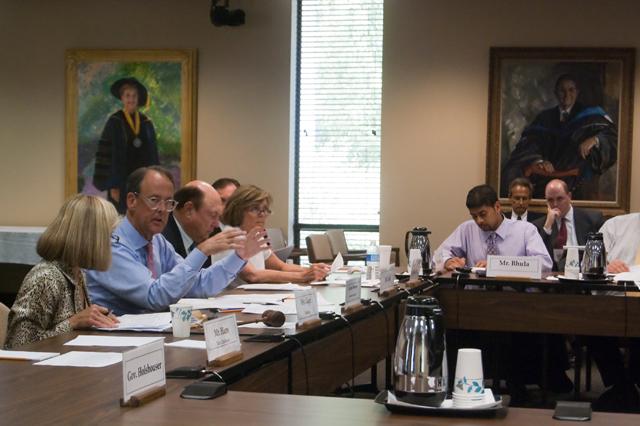CORRECTION: The pre-approved hike amount is only $150. The original $200 increase was from a student tax enacted in 2009 by the N.C. General Assembly. UNCASG had it repealed and replaced with the Board of Governor’s rate of $150.
N.C. State students will face an additional $750 tuition increase, on top of the pre-approved $150 hike, when they return in the fall due to an approved plan by UNC System President Erskine Bowles Tuesday evening.
The plan, which assessed each UNC System schools’ tuition eligibility, acknowledged the University’s size and proposal and agreed to the University’s proposed 2010-2011 tuition increase. Because of prior approved tuition increases, students will see a $900 increase from the 2009-2010 year.
The $900 tuition boost is a pain other universities are also bearing; UNC-Chapel Hill will face the same tuition aches in the 2010-2011 school year.
Due to the $70 million budget cut signed by Gov. Bev Perdue June 30, the University will still face a $3 million shortfall not covered by the tuition increase. The cuts are aimed at non-teaching related positions and programs. At almost $4 million, UNC-CH is the only university in the UNC System which has taken a bigger cut.
NCSU has elected to burden the boost in its entirety for the upcoming year as opposed to splitting the amount between two years. UNC-CH will also take its entire increase this year, but other institutions like ECU, UNC-Asheville and UNC-Pembroke opted to have their hikes split between two school years.
Hannah Gage, chair of the UNC System Board of Governors, said the decision was the best option to choose from to ensure quality teaching and a high academic level.
“This may be the best of some bad options,” Gage said. “If you had told me three years ago that we would all be sitting here today talking about potentially raising tuition $950 in one year, I would have probably told you that you were talking about another state.”
Bowles maintained that even with the proposed tuition increases, all UNC System campuses are still in the lowest quarter, with regard to tuition rates, in comparison to public peer institutions.
For more information on this developing story, check out Thursday’s print edition of the Technician and technicianonline.com.








